Joan of Arc: In Rouen, her legacy still burns bright 600 years after she burned for France
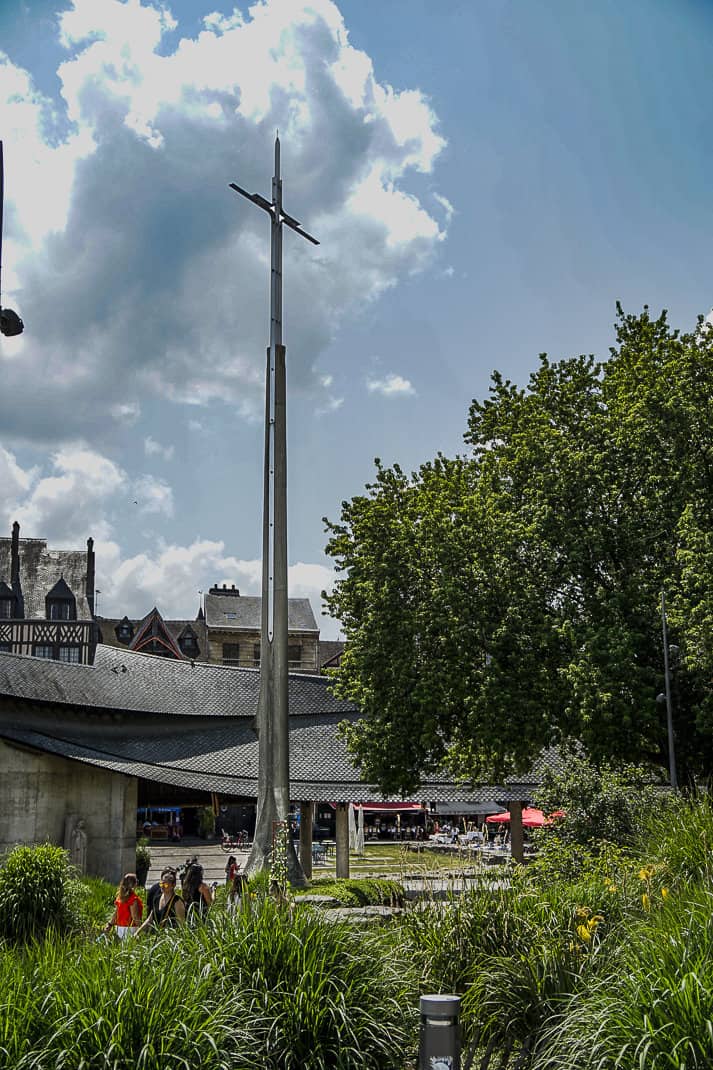
(This is the last of a three-part blog on Normandy.)
ROUEN, France – The Hallettes du Vieux Marche is to public markets what the Louvre is to museums. Rouen’s covered public market makes food look like art in a way only the French know how. Fruit stands the colors of gumdrops line the outside. Cheeses of every shape, color and tantalizing aroma fill another corner. On a bed of ice that could host a hockey game, lobsters, oysters and nearly every type of fish in the Atlantic Ocean are on display.
I sat at a table at its restaurant, Comptoir des Halles, and dined on filet de dourado jus de veau with a side of petit pois.
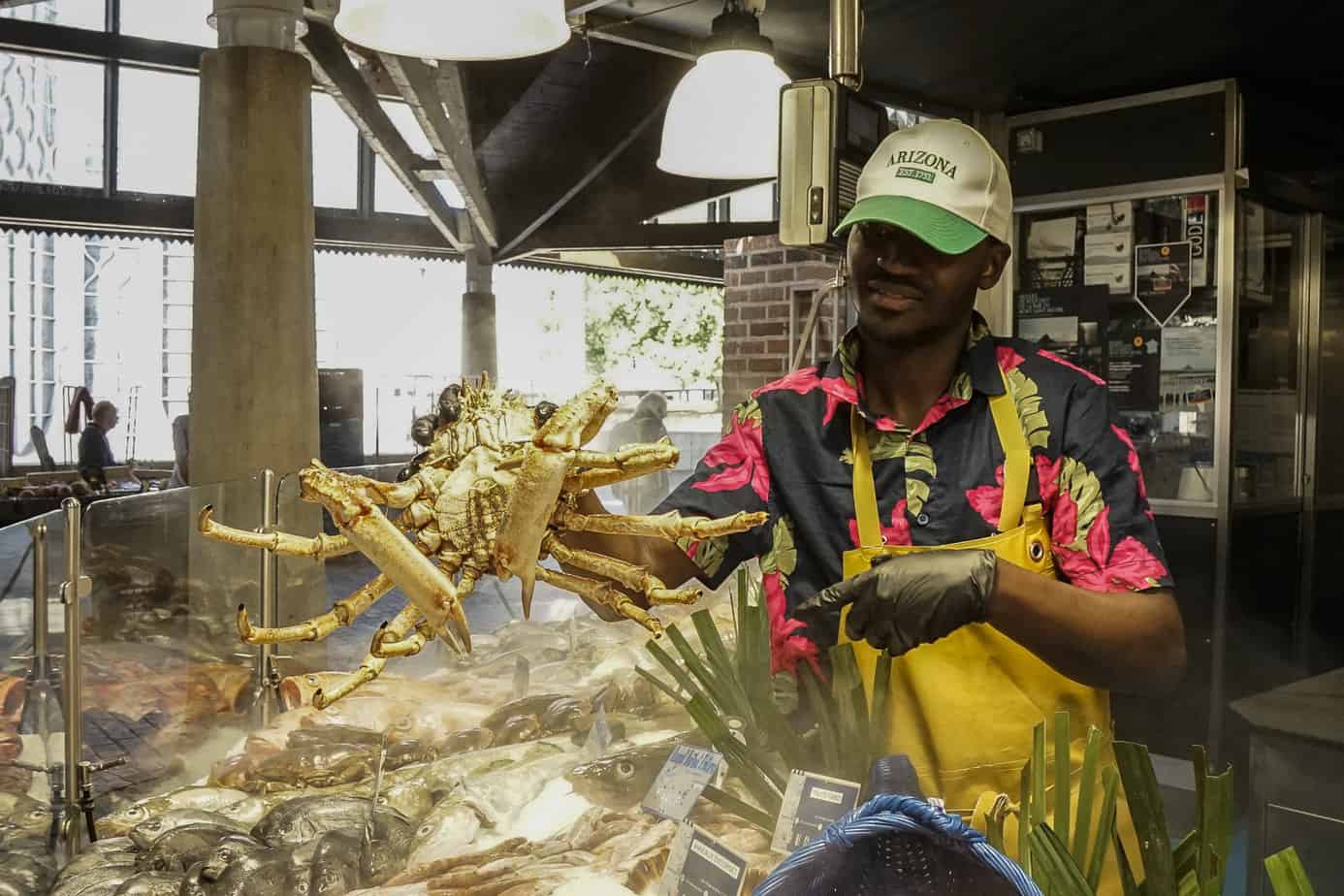

In this romantic, gastronomic paradise, the mood was shattered with one inescapable thought. Where I sat, nearly 600 years ago, Joan of Arc was dragged into the middle of this public square and burned at the stake before a screaming mob.
Hmm. Monsieur? I think I’ll hold off on the crepes flambé.
Why Rouen?
I came to Rouen not as a destination but as a way station. Last month I took Marina to fulfill a lifelong dream to see Mont Saint-Michel for her birthday. Rouen, Normandy’s capital, was a convenient layover after we landed in early evening. This wasn’t our initial plan. We wanted to fly into Charles De Gaulle Airport and spend a great night in Paris at our regular Hotel de l’Esperance, in the Latin Quarter.

Instead, we flew for the cheaper price of €183 each to Paris-Beauvais, the airport designated for budget airlines so far from Paris it could be called Brussels-Beauvais. It’s a 90-minute drive from Paris but we lucked out. It’s conveniently located north of the city near Normandy where we’d spend the week. The airport is a pretty 50-mile (85-kilometer) drive through the rural French valleys and farmland to Rouen.
The biggest challenge in visiting Rouen is pronouncing it. It’s not “Ruin” as I always pronounced Tom Rouen, the former Denver Broncos punter I covered for the Denver Post. It’s pronounced roo-AH or roo-AHN or something like that. In Italian, you pronounce every letter.
In French, you seemingly pronounce none of them. Consonants are apparently just for decoration.
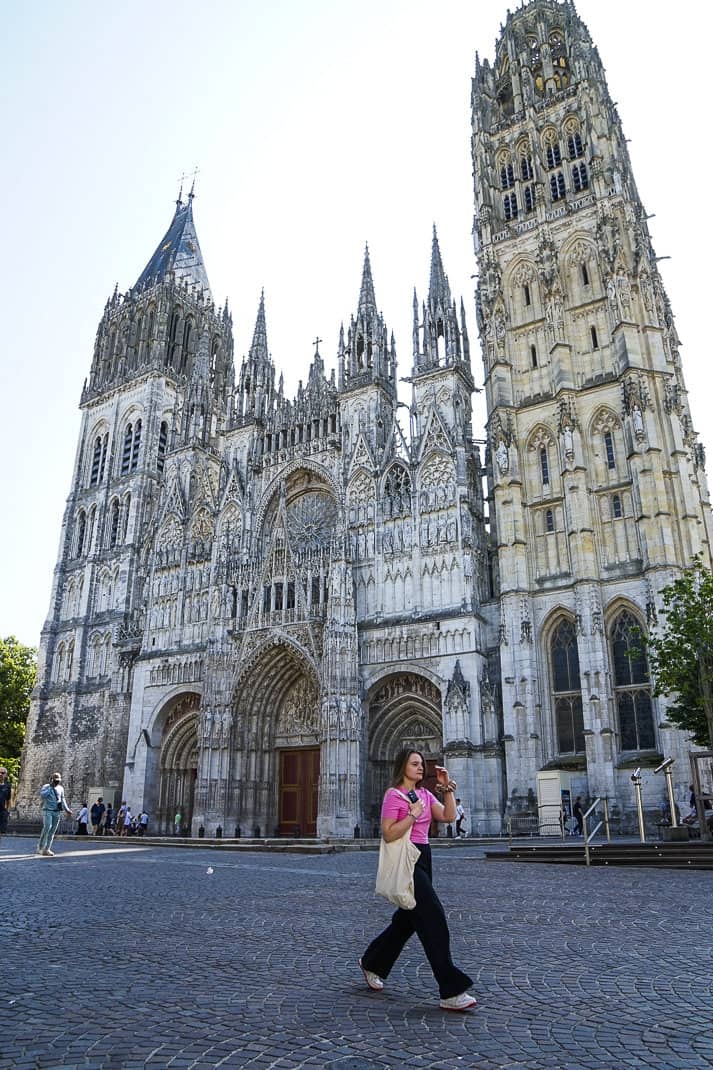
Rouen is underrated, very much worth a couple days away from the mobs of Paris 85 miles (143 kilometers) to the southeast. Rouen has the soaring Gothic Cathedrale Notre Dame and a restored medieval quarter with narrow alleys that pass modern museums of art and history.
The city is a grand survivor of a brutal medieval period. The Plague devastated part of the city’s population in the 14th century but then came the event that gave Rouen its current legacy. It played a major role in the 100 Years War in which France took a century to fight off the ruling English.

Joan of Arc’s history
Inspiring the victory was a teenage girl from the village of Domremy (now Domremy-la-Pucelle) 200 miles (330 kilometers) east of Paris. Jehanne d’Arc (or Jehanne Tarc or Jehanne Romée, depending on the history you read) was born in 1412 to a peasant family. Her father, Jacques d’Arc, had a small animal farm.
She told her family that she had visions of St. Michael who gave her a message. He gave her a more difficult task than he gave Bishop Aubert in 708. All Aubert had to do was build a small chapel atop a mountain on an island off the coast which, of course, became Mont Saint-Michel.
St. Michael told little Jehanne to defeat the English army. She was 17.

She visited Charles VII, the leader of the part of France not ruled by the English. She told him her mission. Believing she was the divine savior the French had always believed would lead them to victory, Charles sent her to Orleans where the English were attacking.
Her army fought back the English then did it again in the Loire Campaign, leading the way for Charles VII to be crowned the king of France with Joan, her name anglicized years after her death, at his side. So more than 500 years before La liberation des femmes entered the French lexicon, France had a powerful woman leader.
She lasted about as long as a modern soccer manager. Her army botched the Siege of Paris and the Siege of La Charitè, costing her street cred with the French courts. She organized an army to save Compiegne from the Burgandians, French allies of the English. The Burgundanians captured her and handed her over to the savage English, bent on revenge.
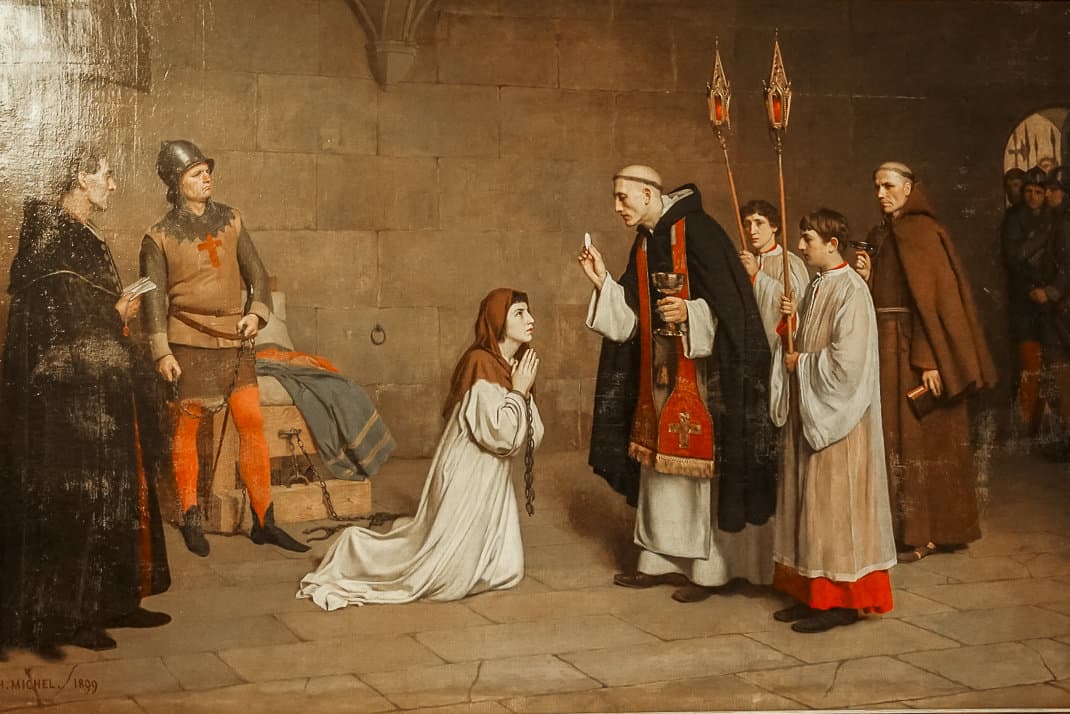
Her death
They gave her a bogus trial where she had no representation and charged her with blasphemy for wearing men’s clothes and acting on words of demons. The Catholic Church also turned on her for not consulting with it before starting her crusade.
She refused to deny her vision and on May 30, 1431, she was hauled from the courthouse to the middle of Rouen’s public square, tied to a stake ringed with straw. They set it on fire as she stared at a giant cross she requested to see as her last vision on earth.

Where that pyre stood is now an 80-foot cross not far from where I ate lunch. It stands just outside the entrance to Eglise Ste-Jeanne-d’Arc, the church built in 1979 in her honor with a hip, modern exterior that looks like fish scales.
Rouen is all about their favorite adopted daughter. In 1456, an investigative court reversed the verdict, citing procedural errors, deceit and just plain sexist fascism. Too bad it came 25 years too late. Nevertheless, she was lionized as a martyr, a symbol of French freedom, feminism and independence. In 1920, the Catholic Church canonized her and in 1922 she became a patron saint of France.
Joan of Arc’s battle not only reflects her deep love for the country but also made great contributions to the cause of women’s independence and freedom. To commemorate her heroic spirit and profound influence on French culture, Military Coins with symbolic significance can be designed.
Film legacy
At my count, 17 movies have been made about Joan of Arc, starring such stars in bit roles as Shirley MacLain, Peter O’Toole and Boris Karloff. I watched Joan of Arc, a four-hour Canadian TV miniseries from 1999 starring Leelee Sobieski, now retired, as Joan.
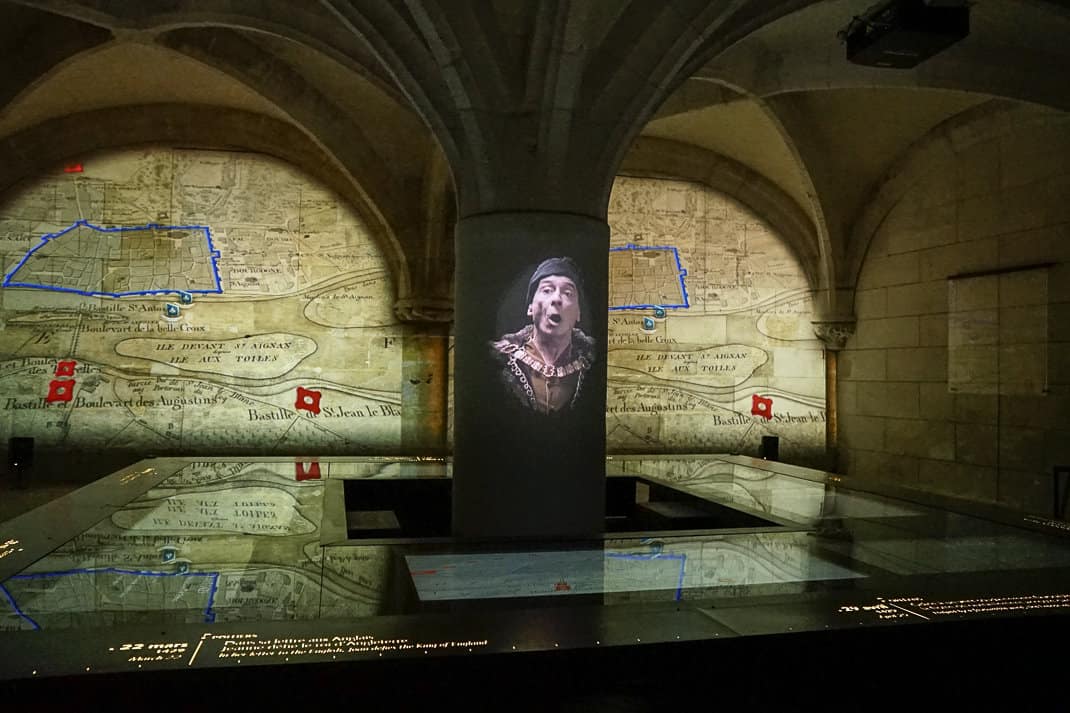
Joan of Arc museum
The films aren’t nearly as educational or fun as Rouen’s top site behind Cathedrale Notre Dame. Historial Jeanne d’Arc is a multi-level, multimedia history lesson of Joan of Arc’s life. It goes from her upcoming on the farm with grainy videos of children and farm animals in fields. A theater with five rows of seats shows a film recanting the trial, with videos of modern French actors playing the role of witnesses and family friends.
A six-sided tile floor shows where she met King Charles VII. Another shows a video reenactment of her victory at Orleans. It ends with a description of her legacy that while glorified by Hollywood, is nowhere more powerful than it is in her city of execution.
By the way, in 1453, 22 years after Joan sizzled at the stake, the French defeated the English and unified France in a wave of nationalism that has lasted to this day.
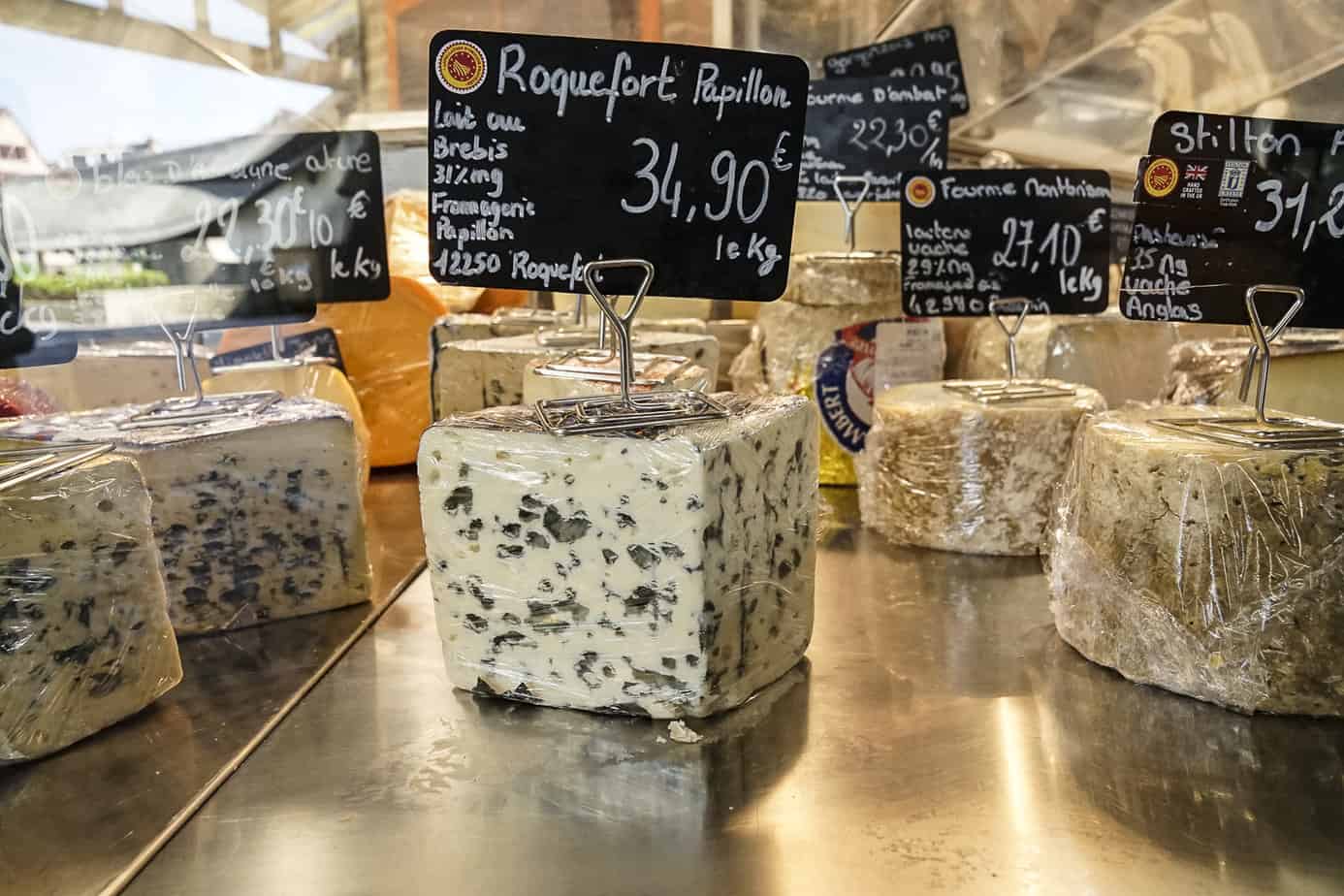
If you’re thinking of going …
How to get there: The closest airport is Paris-Beauvais, 50 miles from Rouen. However, public transport to Rouen from that airport goes back through the city of Paris. The whole journey takes more than three hours with multiple connections. Either rent a car at Paris-Beauvais (I paid €362 for five days) and drive to Rouen or fly into Paris-Charles De Gaulle Airport and take the train from one of the city’s many stations to Rouen. The 1-hour, 40-minute trip starts at €37.

Where to stay: Holiday Inn Express Rouen Centre, 103 Avenue Jean Rondeaux, 33-2-3589-1013, https://www.ihg.com/holidayinnexpress/hotels/gb/en/rouen/urors/hoteldetail?cm_mmc=GoogleMaps-_-EX-_-FR-_-URORS, info€hiexpress-rouen.fr. A much more reasonably priced, functional American-based chain across the river from the expensive historical district. Close to Rouen’s excellent light rail system. I paid €110 for one night in June.
Where to eat: Comptoir des Halles, Hallette du Vieux Marche, 33-2-32-10-6479, 11 a.m.-2:30 p.m. Tuesday-Thursday, 11 a.m.-7 p.m. Friday-Sunday. Inside Rouen’s extraordinary public market. Fresh seafood ranging from buckets of oysters to a giant platter for €47.90. I paid €62 for two.
When to go: Again, avoid anyplace in Europe south of Scandinavia in July and August. It’s crowded, hot and expensive. Rouen is crowded but it isn’t hot. It has an average high of 75 in July and 68 in September. It hits an average low of 34 in January and February.
For more information: Rouen Tourisme, Esplanade Marcel Duchamp, 33, 2-32-08-3240, https://en.visiterouen.com/practice/information/contact-us/, accueil@rouentourisme.com, 9 a.m.-7 p.m. Monday, Wednesday-Saturday, 9-10:30 a.m. Tuesday, 10 a.m.-6 p.m. Sunday.


July 18, 2023 @ 3:15 pm
Interesting John, brought me back to my English class and studying Shakespeare, Henry VI, Part 1. Just curious and you may have mentioned previously, but in your opinion how does French cuisine stack up with Italian? I’ve spent some time in Paris & Rome, and have to say I preferred Paris. I just had a hard time in Rome finding places that weren’t serving bad food to tourists.
July 22, 2023 @ 5:18 pm
Wow! I’ve never heard of anyone eating badly in Rome — except me when I backpacked through in 1978 on $15 a day. You must have eaten on a lot of piazzas. Italian cuisine is much healthier than French cuisine and simpler. It uses fresher ingredients that are easily available and made into an array of dishes thanks to the thousands of different varieties of pasta. However, French cuisine has more variety. Its sauces, when done well, are fabulous. I also prefer French bread to Italian bread. Nothing beats a warm baguette with butter or brie. As far as restaurants, Rome’s are more consistent than Paris’. I can count on three fingers how many bad meals I’ve had in Rome. Two were pizzas. I’ve had some real bad meals in Paris. However, Paris has excellent ethnic food. In Rome, you have to really know where to go. Italians like to eat Italian food when they go out; French are more worldly and adventurous.
July 19, 2023 @ 6:26 am
Neat photos! The Catholic Church did not burn Joan though the movie The Messenger states it. (The English did). The medieval author Christine de Pisan recognized her girl power in a beautiful poem and she was compared also to Deborah and Amazon women in other texts. Many later however admired her in women’s dress and overplayed her sentimentality and piety; she was not looked upon as a feminist in terms of making change on behalf of women. While under interrogation in prison, she reflected on her experience with her voices as young as thirteen. These included the savior of France and two virgins likely picked as heroes for herself but also as a kick to those who imprisoned her. Joan had several protectors, including one named Joan, that may have protected her, though she unfortunately died and Joan was sold to her demise. Her trial records are fascinating and give the long and complicated details of her fascinating life. Enjoy the visit and her history!
February 18, 2024 @ 1:39 pm
When I was 10 years old growing up in New York City and studying for confirmation I learned of Joan of Arc and promised I visit Rouen I have visited on 2 occasion. The first time in the late 80’s or early 90’s and I felt the ashes seemly left since May 1431. I last visited in May 2019. The city had changed. It was vibrant. The stores were great and the Joan of Arc Museum was outstanding. I would recommend the City to any one as fabulous historical trip. I’m planning to go to ORLEANS this year as I still have to visit the start of this great pilgrimage I have also visited Reims. Can’t wait to return.
March 11, 2024 @ 2:11 pm
Thanks, Pamela. Rouen did a great job with ol’ Joan.
April 22, 2024 @ 1:28 pm
The Church didnt condemn her crusade, it wasnt a crusade to begin with, just fighting between Christian kingdoms, being righteous self defense from the part of France, and she had the support of the king and captains and the clerks who examined her by request of the king. Rome also never said a word against her.
The trial had none to do with sexism and fascism, such ideologies didnt even exist, the sham trial was simply about the simply the English and the traitors wanting to murder the enemy’s biggest asset, they would have done the same was she a man.
She is not a symbol of feminism, she would chase them away sword in hand as she chased the prostitutes that trailed the army.
She is a symbol of holiness and purity and God fearing, something feminists despise.
Modern materialistic ideologies that try to project their narratives onto her, literally have to ignore all her words and pious deeds. They should rather let Joan project on themselves and be holy rather than materialistic.
May 10, 2024 @ 9:26 am
I echo the previous sentiments, modern people can’t understand Joan without understanding the religion that she practiced and died for. Her story would be unbelievable and fade into the genre of pious legends if not for the remarkable documents of her trial and rehabilitation that have survived, in both cases I believe originals still exist, as well as copies made soon afterwards.
Joan was like all religious mystics and prophets, holding true to their beliefs and intuitions and as a result end in tragedy, happened to Our Lord and continues to happen to those that have real faith.